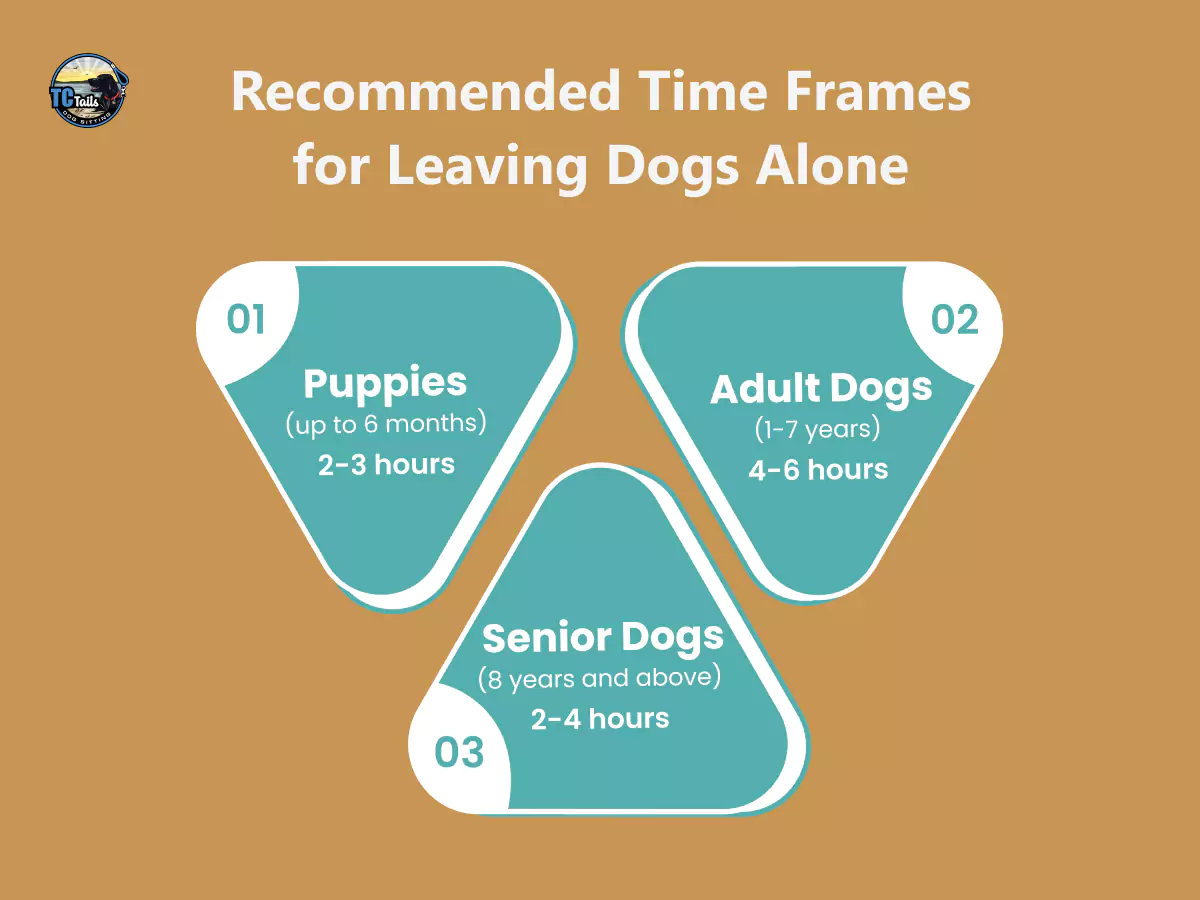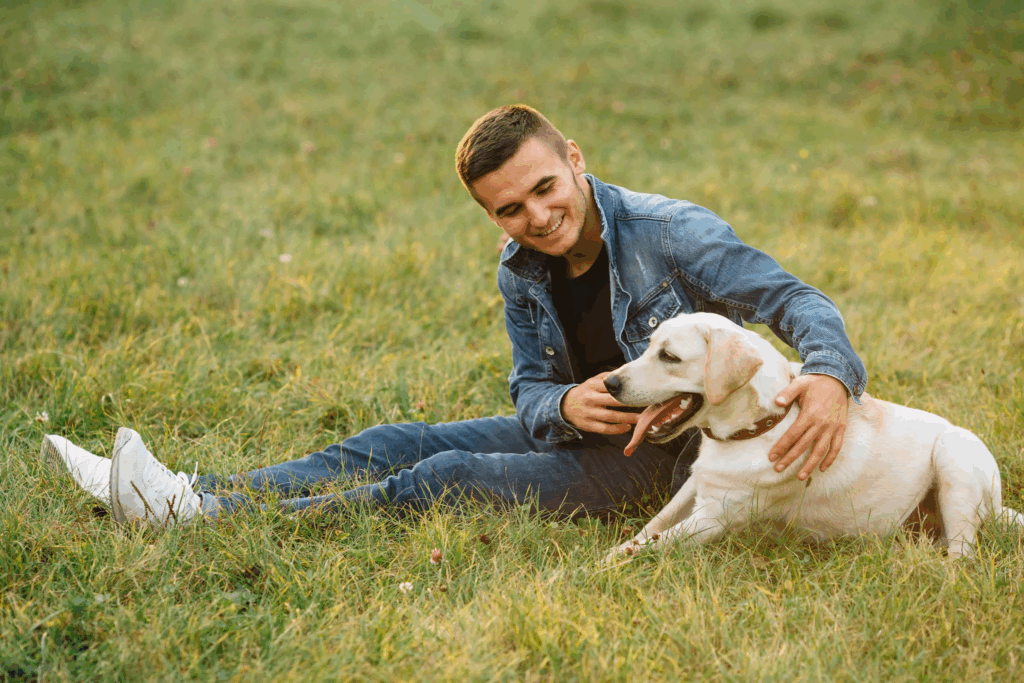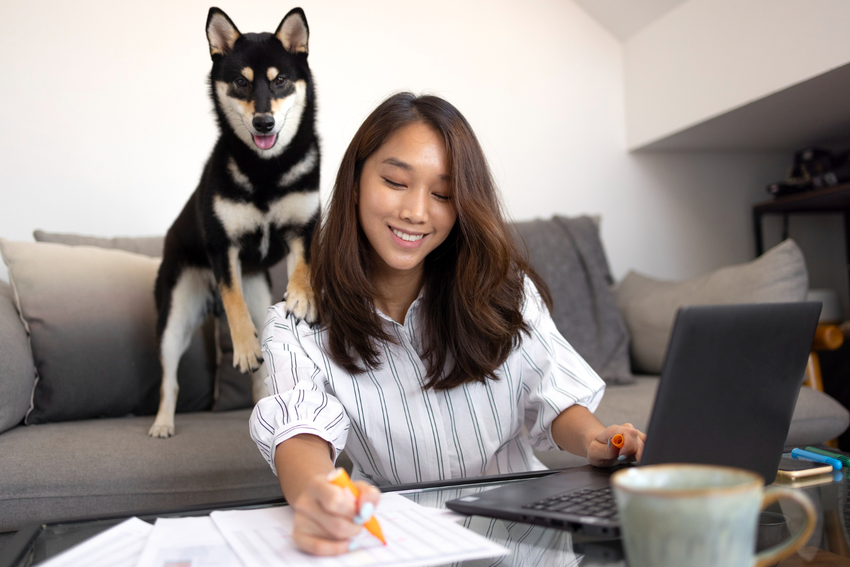Letting your dog stay alone for an extended period can drastically affect their happiness as well as their overall health. At TC Tails, we understand that every dog is different, hence the reason for needing to know how much alone time is good for them.
Whether affection or engagement of the mind, dogs need interactions, and when deprived of such for long, undesirable behaviours, stress and health complications follow.
This guide examines the age, breed, activity as well as training of your pet as indicators of how long you can opt not to stay with your dog to keep it in a good state.
Read More About Tips for Boarding a Dog with Separation Anxiety
Factors That Affect How Long You Can Leave Your Dog Alone
Age of the Dog
Puppies: Young dogs are usually in need of constant attention in terms of bathroom needs, feeding as well as monitoring. These young children are yet mastering the physiological functions and bladder control takes a little bit of time.
Adult Dogs: Many adult dogs are left alone for a few hours, but such pet majority can be alone for some hours by themselves with a few exceptions. It is also worth remembering that there are people with different breed and energetic level that will put them to the test.
Senior Dogs: Particularly older dogs often have a greater source of care due to health or other factors such as less mobility. They may use the bathroom time within a short time span and even endure long walks alone.
Breed and Size
Breeds with High Energy: Pets and their handlers – Border Collies, German Shepherds, Golden Retrievers – are fun and sporting but also energetic, thus need good physical activity. Boredom can intervene when dogs are locked indoors for long and this can result in chew sessions and other damaging behaviours.
Breeds with Low Energy: Bulldog, Pug, and Basset Hound dogs are calmer as compared to other dogs and as such, do not tend to be alone for long as other dogs may do.
Small vs. Large Breed Considerations: Small size breeds tend to have small bladders and so may require bathroom breaks quite regularly than the adult dogs. The larger breed is likely to be tolerant of solitude than the smaller breed but one must still remember that the bigger breed also needs some physical activity and stimulation of the brain.
Dog’s Temperament and Behavior
Anxiety-Prone Dogs: Anxious dogs or dogs who suffer from separation anxiety will have a problem being left by themselves even for a little while. They may also become destructive, bark too much or show other signs of anxiety.
Independent Dogs: Others may be more independent dogs whose chance of being alone is higher than other ones. Still, the so-called independent pooches also need their owners’ presence and mental activity.
Health Conditions
Special Needs: Blind or deaf dogs are other typical examples of dogs with special needs that ought to be given special attention and care.
Illnesses or Medication: An ill dog as well as a dog under some medications would require many additional checks and quite possibly, neither would stand being all by themselves for long.
Give your pet the care they deserve! Contact TC Tails to book a stay and provide your furry friend with a safe, enjoyable boarding experience. |
Recommended Time Frames for Leaving Dogs Alone

Puppies (up to 6 months)
Puppies can’t be left alone for more than 2-3 hours.This is because it’s the most critical period in puppy training and they are still in the process of learning how to be housebroken. Lots of dogs need to be potty trained, to be fed, and of course, they need love, basic behaviors must be taught to puppies, and they must get attached to their owners.
Adult Dogs (1-7 years)
Most of the adult dogs can be left unattended for around 4-6 hours. Nevertheless, this cannot be generalized as it has a range. Considerations that affect the durations of absence in adult dogs also include age, energy level and breed among others.
Senior Dogs (8 years and above)
Elderly dogs more often need help, due to the health reasons or less possibility of being active so they can be left for 2-4 hours depending on mobility and health. This may include needing more bathroom breaks or dropping off for an extended period may be difficult for them. Such elderly dogs who are on medication or need to be better cared for may be isolated needy and require watching over more.
Read More About Top 14 Qualities That Define the Best Pet Sitters
Consequences of Leaving Your Dog Alone for Too Long
Behavioral Issues
- Separation Anxiety: Dogs will develop a condition of separation anxiety if left alone for a long time resulting in destructive behavior or other signs of distress and possibly excessive barking.
- Destructive Behavior: Destructive behavior, including but not limited to chewing on woodwork, digging, and scratching surfaces, could stem from anger and boredom.
- Excessive Barking: Dogs were found to bark excessively when alone, which is regarded as a form of anxiety and loneliness by the dogs.
Physical Health Concerns
- Dehydration: Extended periods of being canine and not being allowed access to water could lead a dog into dehydration.
- Bladder Issues: When dogs cannot go outside enough to relieve themselves, bladder and urinary problems commonly develop.
- Obesity: Both lack of exercise and excessive eating would obviously cause overweight, which will, in turn, lead to some health nuisances.
Emotional Well-being
- Stress: Stress and anxiety can be induced in dogs when they spend long periods of time on their own.
- Boredom: Since dogs are primarily brought up in an environment where they are active, it is crucial for them to receive changes to the atmosphere and activities provision to maintain their health. Without the onlookers or helpers, they eventually become bored and start doing things that are not favorable.
- Depression: In dogs, stress and solitude over time will eventually lead to depression, which will manifest itself in some dogs in the form of lethargy, poor appetite, or modified behavior.
Don’t wait! Book your pet’s stay with TC Tails now and enjoy peace of mind knowing they are in expert hands. |
How to Prepare Your Dog for Being Alone

- Crate Training: Using a crate for your dog provides a safe and comfortable environment which will reduce the likelihood of your dog engaging in destructive activity in your absence.
- Positive Reinforcement: Rewarding your dog with positive reinforcement when your pet is calm will encourage the dog to tolerate being left alone.
- Gradual Time Increases: Leave your dog alone for very short periods at the beginning and increase that time gradually as they get used to being alone.
- Exercise Before Leaving: Before leaving, be sure to give your dog a good amount of physical activity. A well worked-out dog has higher chances of being more composed and relaxed when left alone.
- Creating a Safe Space: Create a specific area which has been puppy proofed and has toys and other comfort items to entertain and reassure your dog in your absence.
Read More About Guide to Pet Boarding Services – Types, Expectations and Tips
Ways to Keep Your Dog Engaged While You’re Away
- Interactive Toys: Engaging suggests that the use of toys that require the dog to think for example puzzle feeders or toys that release treats would provide the mental challenge and use of energy.
- Chew Toys: Provide appropriate and non-destructible chewable objects that will keep the dog busy and meet its desire to chew.
- Background Noise: Leave the television or radio on, but at a low volume, since this offers some ambient noise settling the environment and relieving anxiety.
- Food-Dispensing Toys: Give your dog Kongs or other toys that dispense treats and fill them with delicious food treats that will distract your dog with constructive activity when you are not at home.
Alternatives to Leaving Your Dog Alone
- Doggy Daycare: In this case, you can register your dog at a daycare and ensure that it is well socialized, exercised, and mentally stimulated while you are busy.
- Pet Sitters and Dog Walkers: People choose qualified pet sitters and dog walkers so as to get the pet well fed, exercised, and loved when they are away for whatever reasons.
- Friends or Family: Call on friends or family to come and check on or interact with your pet in order to avert loneliness and provide some companionship when you are away.
Read More About TC Tails: Hosting Dog Boarding at Home with Other Pets
Signs Your Dog is Not Coping Well Alone
Behavioral Changes:
- Anxiety: You should be aware of other signs such as excessive barking, whining when left alone, pacing, or any destructive behavior which indicates that your dog is anxious when away from you.
- Accidents: It has happened that certain incidents inside the house have no explanation or cause. Such incidents would point to your dog having some issues with anxiety or bladder control.
Physical Symptoms:
- Loss of Appetite: An animal’s interest in food may dwindle as a result of overwhelming stress or even depression and this may point to your dog suffering in some way.
- Lethargy: Your dog looks very different from your normal pets. It appears that your machine is very slow. In this case, it may blow stress, anxiety, and potential health problems.
- Over-Grooming: It can include excessive licking of the paws, face, or body; this excessive grooming often is a symptom of stress or anxiety, meaning your dog doesn’t handle loneliness well.
Ready to give your pet a top-notch boarding experience? Contact TC Tails today to schedule their stay and ensure they receive exceptional care! |
Conclusion
In summary, recognizing the particular needs of your dog is crucial so as to maintain happiness and good health among the dogs left alone for some time. Some of these factors are age, breed, temperament and even health and they limit the number of hours the dog should be left alone. Extended periods alone may lead to behavioral problems, anxiety, or health problems. Appropriate training, enough mental engagement, and secure environments can help to make your dog less anxious when you leave.
For the best pet boarding experience and expert care, contact TC Tails today! Let us provide your furry friend with the attention and companionship they deserve.
FAQs
How do I train my dog to be alone?
Start by gradually increasing the time you leave your dog alone, using positive reinforcement techniques and providing them with a safe and comfortable space.
Is it okay to leave my dog alone overnight?
It is generally not recommended to leave your dog alone overnight, especially if they are prone to anxiety or have special needs. Consider alternative arrangements such as a pet sitter or doggy daycare.
How can I tell if my dog has separation anxiety?
Signs of separation anxiety include excessive barking, whining, pacing, destructive behavior, and accidents.
What is the best way to transition my dog to spending more time alone?
Start by leaving your dog alone for short periods and gradually increase the time as they adjust. Use positive reinforcement to reward calm behavior and create a safe, comfortable space with toys and background noise to help ease their anxiety.
How often should I check on my dog while they are alone?
For puppies or dogs with medical conditions, checking in every 2-4 hours is recommended. For adult dogs, a mid-day check-in or dog walking service might be sufficient, especially if you’re gone for more than 6 hours.



